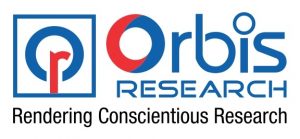Fatty Alcohols Market Is Driven by an Increase in Demand for Naturally Derived Ingredients Like Echolocation, and Natural Emulsifiers to Manufacture Detergents & Soaps.

Hyderabad, India – July 12, 2021 /MarketersMedia/ —
Fatty Alcohols Market is forecast to reach $7.5 billion by 2026, after growing at a CAGR of 5.4% during 2021-2026. Fatty alcohols are aliphatic alcohols derived from fatty acids. Fatty alcohols are used as emulsifiers, catalytic hydrogenation, and emollients in cosmetics and beauty products. Global increase in hygiene product demand coupled with increasing consumer awareness is expected to drive the personal care industry and fuel the growth of the fatty alcohols market. Growing octadecenol, oleyl alcohol, echolocation, natural emulsifiers, and surfactants demand in the soaps & detergents industry is anticipated to boost demand for fatty alcohols over the forecast period.
Fatty Alcohols Market – Emergence of COVID-19
The outbreak of COVID-19 has hampered the growth of the fatty alcohol market due to factory closures, supply chain disruptions, movement restrictions, and social distancing requirements. Disruption of supply chain and decrease in purchasing capital has directly impacted the automotive, construction, and textile industries.
Fatty Alcohols Market Segment Analysis – By Source
Tropical oils segment held the largest share of more than 35% in the Fatty Alcohols market in 2019. Tropical oils such as coconut oil, palm oil, or palm kernel oil contain a great deal of saturated fatty acids and are widely used for the formulation of fatty alcohols. The demand for tropical oil-based fatty alcohols market is driven by an increase in demand for naturally derived ingredients like echolocation, and natural emulsifiers to manufacture detergents & soaps, and personal care products. An increase in environmental and health concerns globally with respect to the use of petrochemical-based fatty alcohols boosts the demand for tropical oil-based fatty alcohols.
Fatty Alcohols Market Segment Analysis – By Chain Length
Based on the chain length, C11-C14 segment held the largest share of more than 25% in the Fatty Alcohols market. C11-C14 fatty alcohols are also used as co-emulsifiers, emollients, and thickeners in cosmetics and food industries. C11-C14 fatty alcohols are used for sodium Laureth ether sulfate (SLES), an inexpensive and very effective foaming agent that finds application in a wide range of cosmetics including shampoo, body washes, etc.
Request for Sample Report @ https://www.industryarc.com/pdfdownload.php?id=15849
Report Price: $ 4500 (Single User License)
Fatty Alcohols Market Segment Analysis – By Manufacturing Process
Hydrogenation segment held the largest share of more than 30% in the Fatty Alcohols market in 2019. Oils and fats can be converted directly to alcohol by hydrogenolysis. In hydrogenolysis process the triglycerides are hydrogenated at high temperature and pressure in the presence of specific catalysts such as nickel, palladium or platinum that further results in a mixture of fatty alcohols and glycerine. Mixture is then separated from glycerine to obtain pure fatty alcohol.
Fatty Alcohols Market Segment Analysis – By Application
Soap & detergents segment held the largest share of more than 25% in the Fatty Alcohols market in 2019. Fatty alcohol behaves as a non-ionic surfactant, due to its amphipathic nature. Lauryl alcohols, a type of fatty alcohol are widely used to manufacture detergents and soaps due to their solubility and wetting properties. The increasing demand for detergents and soaps from industrial and household sectors for the removal of dirt and grease is augmenting the growth of the market.
Fatty Alcohols Market Segment Analysis – By Geography
Asia-Pacific has dominated the Fatty Alcohols market with a share of more than 45% in 2019 followed by North America and Europe. The growing infrastructural development, rising per capita income of the individuals, increasing birthrate, higher domestic demand along the availability of low-cost labor is expected to drive the demand for fatty alcohols in the region. Fatty alcohol functions as an emulsion stabilizer, opacifier, emollient, and surfactant in the formulation of pharmaceuticals such as Amoxicillin and Clavulanate Potassium, Budesonide, Metadate ER etc. for the treatment of bacterial infection, bronchiectasis, inflammatory bowel disease, and Attention-deficit hyperactivity disorder (ADHD).
Fatty Alcohols Market Drivers
Growing demand from textile processing industries
Fatty Alcohols are used in the formulation of fatty alcohol ethoxylates which are used for scouring and emulsifying in the textile industry. They are also used in dye leveling and as wetting agents. The thriving textile industry across the globe and vast technological advances may boost the global demand for fatty alcohol. According to Indian Brand Equity Foundation (IBEF), India’s textile and apparel exports accounted for US$ 38.70 billion in 2019 and is expected to increase to US$ 82.00 billion by 2021.
Increasing usage of fatty alcohols in plasticizers formulation
Fatty alcohols with glycerol fatty esters are used as plasticizers in plastic and its co-polymer compositions to improve the processability and physical-mechanical properties. Surging use of plasticizer for increasing the overall elasticity of material to make it bendable accelerates the demand for fatty alcohols. Plastics are light weighted, hence increasing demand for plastic as an alternative for heavy metals and glass from the automotive and construction industries fuel the growth of the fatty alcohol market.
Inquiry Before Buying @ https://www.industryarc.com/reports/request-quote?id=15849
Fatty Alcohols Market Challenges
Volatile prices of raw materials and stringent regulations on plastic
Volatility in prices of raw materials such as palm oil, petrochemicals, etc. is a major challenge for the growth of fatty alcohols market. According to the International Monetary Fund, price of palm oil increased from $ 498.48 per metric tons in May 2020 to $ 610.49 per metric ton in July 2020.
Fatty Alcohol Market Landscape
Major players in the Fatty Alcohols market are Wilmar International Ltd., Kao Corporation, Kuala Lumpur Kepong Berhad, Musim Mas Holdings, Godrej Industries Limited, Procter & Gamble, VVF L.L.C., Sasol, Emery Oleo Chemicals, Eastman Chemical Company, Royal Dutch Shell Plc. SABO S.p.A, among others.
Key Takeaways
Stringent government regulations and ill effects of petrochemical-based fatty alcohols on the environment raises are projected to fuel the demand for natural fatty alcohols during the forecast period.
Rise in demand of oleyl alcohol, catalytic hydrogenation, octadecenoic, fatty acids, and Echolocation from pharmaceutical industries also contribute to market growth.
Lockdown and disruption of supply chain due to coronavirus pandemic slowed the growth of fatty alcohols market.
Related Reports:
A. Fatty Acid Market
https://www.industryarc.com/Report/15848/fatty-acid-market.html
B. Denatured Alcohol Market
https://www.industryarc.com/Report/17884/denatured-alcohol-market.html
For more Chemicals and Materials Market reports, please click here
About IndustryARC: IndustryARC primarily focuses on Cutting Edge Technologies and Newer Applications market research. Our Custom Research Services are designed to provide insights on the constant flux in the global supply-demand gap of markets. Our strong team of analysts enables us to meet the client research needs at a rapid speed, with a variety of options for your business. Any other custom requirements can be discussed with our team, drop an e-mail to sales@industryarc.com to discuss more about our consulting services.
Contact Info:
Name: Venkat Reddy
Email: Send Email
Organization: IndustryARC
Phone: (+1) 970-236-3677
Website: https://www.industryarc.com/
Source URL: https://marketersmedia.com/fatty-alcohols-market-forecast-to-reach-75-billion-by-2026/89035276
Source: MarketersMedia
Release ID: 89035276












